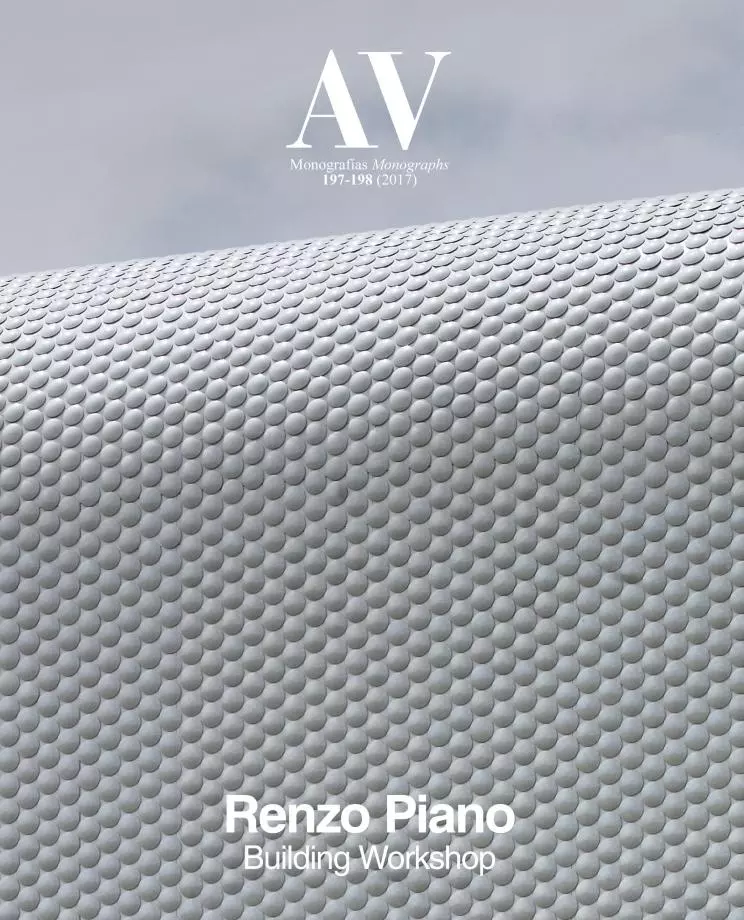Piano in Pieces

Renzo Piano sums up his attitude and method in the name of the studio. ‘Building Workshop’ refers both to the physical condition of architecture and to its craftsmanship: a contemporary version of the traditional ‘bottega’, it orchestrates the work of masters, journeymen, and apprentices in the design, ‘piece by piece,’ of material constructions that must harbor the immaterial flux of the lives of people, aside from blending effortlessly with the urban fabric or the natural landscape. About to turn 80, the architect’s collection of experiences – understood also as independent pieces that are threaded into his biography like rosary beads – is so rich that it can only be highlighted briefly with a few flashes, to present which I here resort to the artifice of alphabetical order.
Poetry can and must be popular: Renzo Piano’s lyrical quest is at the service of people, because his aesthetics cannot be separated from his ethics. Imagination leads to invention: it is possible to dream with one’s eyes open, but this can only be justified by the innovation shown in the buildings. Architecture is after all an art: trade and craft that makes artifacts shaped by visual rules that cannot avoid beauty. Narration must be natural: each work tells the story of a unique and sometimes incredible journey, and yet told in a casual way that makes it seem obvious. Order comes from obstination: however much geometric models and constructive rationality may establish patterns, in the end regularity is the result of the stubborn recurrent reframing of the project.
Popular poetry, inventive imagination, artistic architecture, natural narration, obstinate order: five features of Piano the maker, needed to ‘poetically imagine architectures narratively ordered’, an acrostic inspired by the famous one of his compatriot Verdi, whose oeuvre has many points in common with one that has interpreted through architecture composers of his time like Pierre Boulez or Luigi Nono. Lyrical and musical, the architecture of Renzo Piano is also tirelessly inventive, capable of offering suggestive narrations and meticulously ordered in its details and its functions, because it relies at once on the careful observation of human behavior and on the generous readiness to improve individual lives in the shared space of collective life.
Piano the craftsman, the most usual interpretation, very well expressed in the motto ‘piece by piece’, and summed up in the fascinating image of the wall at the model workshop: architecture as manufacture and assembly, and the piece as an invention and a symbol of the whole, from the gerberettes of the Pompidou or the ‘leaves’ of the Menil to the ceramic discs of the Botín Centre; an approach that translates the work of the craftsman into industrial design, combining tradition and technique in objects where form and function meet to achieve an aesthetic effect.
Piano the sailor, the inevitable reference for a native of Genoa, because the careened surfaces, slender masts, and tight cables of sailing boats are the best inspiration for light constructions, and because the city that also gave birth to Columbus carries the seed of an exploratory impulse which has driven the architect to build on five continents, to such an extent that the prize bestowed on the best Italian student is a journey around the world to discover the works of one who has traveled the oceans, taking the light and spirit of the sea of his childhood to faraway places.
Piano the charmer, because no critic or client can resist the appeal of a truly humble designer, always relaxed, always interested in the ideas or experiences of others, and always determined to satisfy the needs and demands of those who will use or inhabit his buildings: an attitude of service that guides the team work carried out in the office, which does not exclude artistic intention, because the project in the ‘bottega’ needs a permanent dialogue between those who address the demands of site and program, but always guided by the search for an evasive beauty.
Piano the citizen, because his wish to build places for civic encounter is based on the ethical resilience of one who believes that individual interest must defer to collective convenience, that a building is a fragment of the city, and that the artistic dimension of architecture only flourishes when it resonates with the plural fabric of the society: a civic dimension that has moved him to donate his salary as lifetime senator to young architects studying urban peripheries, and which converts his works into material manifestos in defense of common humanity.[+]





